This was published 7 years ago
Dudley Black Country Living Museum: Living England's history
By John Huxley
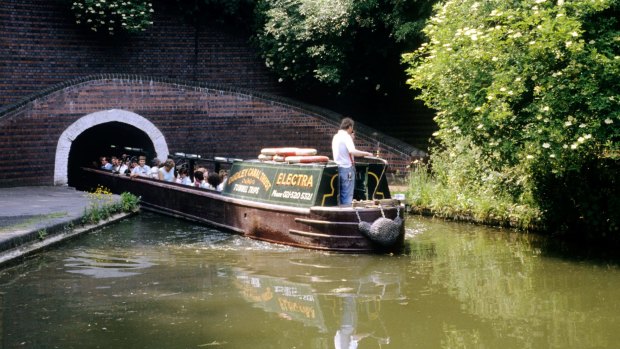
Barges at the Dudley Black Country Museum in England allow visitors to explore rock formations, limestone mines, branch tunnels and canal basins.Credit: Alamy
There can't be many other places in the world where visitors can take a "45-minute, underground trip into 428 million years of history" on a barge propelled by two women "legging it". That is, lying across the 15-tonne boat, pushing off the walls of a narrow tunnel with their feet.
At least, that's the theory. In fact, despite the women's efforts, the colourful red, white and green longboat is going nowhere fast… until Simon our captain relents, and turns the engines back on. "We'd better get going," he jokes, "the tide's coming in."
The eerie underground trips, of up to four hours, explore an extensive system of ancient rock formations, limestone mines, branch tunnels and unimaginably beautiful, ivy-curtained canal basins.
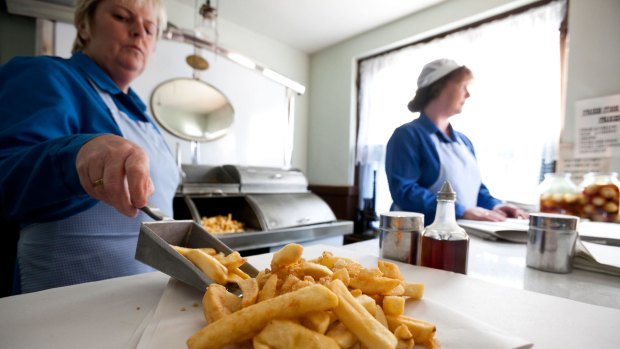
An traditional fish and chip shop at the Black Country Living Museum.Credit: Alamy
They are lovingly operated by the Dudley Canal Trust, volunteers who in the 1970s successfully fought to save the system from extinction. Today, they are a major attraction, a must-see for visitors to the Black Country Living Museum, in the beating heart of England.
The Black Country is a place like no other; a seemingly unlovable place – built upon towns such as Dudley, West Bromwich, Walsall, Oldbury, Bilston and arguably Wolverhampton – that gained its name in the mid-19th century for its dirty industries, its coal, its grime, its smoke.
In 1868 an American consul to nearby Birmingham described the Black Country as being "black by day and red by night" from the fires of the blast furnaces, forges and kilns … unmatched for its vast and varied production". The young Queen Victoria was not so amused.
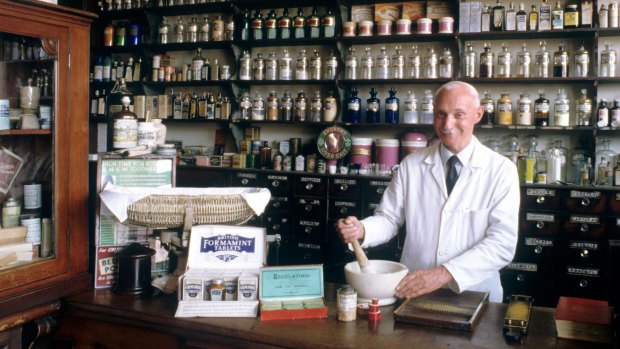
Victorian Period chemists shop.Credit: Alamy
When she took the train from Birmingham through nearby Wolverhampton she asked that her carriage curtains be drawn because she found the sight of Black Country's poverty and bleak industrial landscape so depressing. Today, even she would have enjoyed a day out at this unique, open-air museum.
Spread across reclaimed land, the gently-sloping site is now lined with more than 50 buildings, collected from elsewhere in the Black Country, dismantled brick-by-precious brick, and lovingly rebuilt to create a late 19th century village criss-crossed by canals.
Here we found the Bottle & Glass pub, two cafes, a Methodist chapel, the 1920s Limelight Cinema, St James primary school, and an authentic mix of shops selling everything from fruit to fossils, lollies to herbal remedies, green groceries to "gentlemen's clothing".
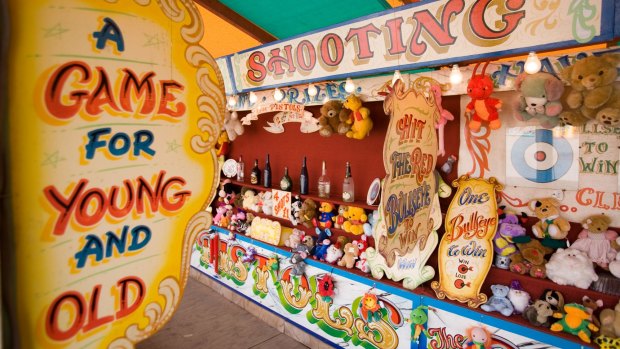
Black Country Museum funfair.Credit: Alamy
At each stop there was a jolly museum expert, dressed in period clothing, each well-versed in local history, full of nostalgia and Monty Python-style "we had it tough" good humour ready to explain the workings of their "exhibit".
At the school, children and adults alike can practise their times tables. In Emile Doo's pharmacy we were warned off the dodgy remedies sold by chemists a century or so ago. And we could buy an award-winning box of beef-fat fried fish and chips at the 1930s Hobb's Cafe.
At the lolly shop we sampled old favourites such as bon-bons, homemade fudge and boiled "sucks", and laughed at the guide's jokes. Sample: Why did the hedgehog cross the road? To get to his flatmate.
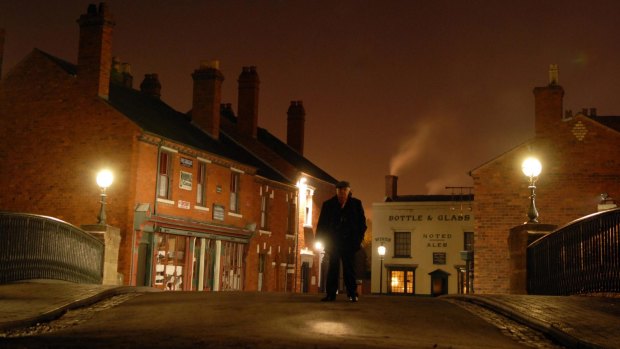
The Black Country Museum by night.Credit: Alamy
So authentic seem the sights, sounds and smells of the village that it comes as no surprise to learn that its landscape was used extensively by makers of the popular TV 1920s gangster drama Peaky Blinders.
And, of course, that's not all. The museum site is dotted with working reminders of the industries upon which the Black Country's worldwide reputation was – quite literally in some cases – founded.
As the beautiful guidebook explains here is a place where we can "witness the glow of the forges, smell the steam of the engines, and hear the banging of hot metal". Up close and sweaty, alongside not just the machines, but men and women operators.
Visitors can descend on foot "into the thick" of an underground drift coal mine; see the chain-maker set the sparks flying; and, step inside a working replica of the world's first successful steam engine, built by Thomas Newcomen in 1712.
They can also "travel back in time", as they say, by taking a ride on an old trolley-bus, hopping on and off a vintage tram or, of course, do a "bit of legging" along the Dudley Canal to examine the limestone caverns.
Today, they are an essential stop on a beautiful, fun-filled trip…though here and there it feels like a holy place: a man-made, underground cathedral, perhaps, where thousands of Black Country men, women and children laboured, lived and died.
At the end of a wonderful day out, full of homespun fun, period fine-dining and colourful display, it is a sobering thought that some of the children working in the mines were as young as eight, and that few of the miners, be they men or women, reached their mid-30s.
On such lives was the prosperity and worldwide fame of the Black Country founded.
At this late stage, I must declare a personal interest. I was born and grew up on the fringes of the Black Country – in the sort of "Smoky, Dark Grey Country", perhaps. I still follow the top local football team, West Bromwich Albion.
I love this place and its people. And, though it is not cheap at online prices of about $28 for adults and $14 for children between five and 16 years, and the weather can be very changeable (well, this is England) it is excellent value. Thoroughly recommended.
TRIP NOTES
MORE
VISIT
To the newcomer, the museum may seem set in a seemingly impenetrable web of busy roads. In fact, it's only five kilometres from junction 2 of the M5 motorway, and 12 kilometres from junction 10 on the M6. Set sat navs for DY1 4SQ. Otherwise it can be accessed from Tipton Station on the Birmingham to Wolverhampton line or from one of several bus services. See travelinemidlands.co.uk
STAY
There is a wide choice of convenient hotels, motels and bed and breakfast accommodation in the area, but why not back-up a trip to the Black Country with a farm-stay in the Midlands "green country". For options go to websites such as visitengland.com and farmstay.co.uk
John Huxley travelled to, and toured the Black Country Living Museum at his own expense.
Sign up for the Traveller Deals newsletter
Get exclusive travel deals delivered straight to your inbox. Sign up now.